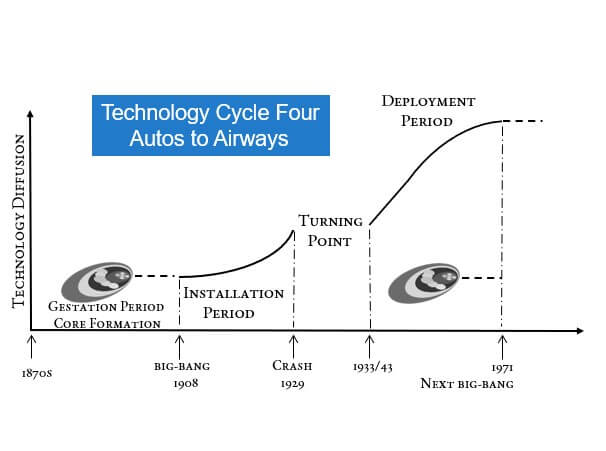
Technology Cycle Four Overview
Beneath the summary are much deeper examinations of the technology cycle.
The Mass Production Revolution
Technology Cycle four, triggered by Ford’s first Model T rolling off the assembly line in 1908, fundamentally transformed how humanity manufactured goods and organized labor. The assembly line didn’t just make cars affordable—it created an entirely new economic paradigm based on mass production, standardization, and economies of scale. This revolutionized industries beyond automobiles, from steel and petrochemicals to aviation and electronics. The concept of interchangeable parts and systematic efficiency became the dominant organizational principle, enabling the production of complex goods at unprecedented volumes and dramatically lower costs.
Reshaping Space and Society
The automobile age literally rebuilt the physical landscape of human civilization. Cities expanded outward as suburbs became accessible, fundamentally altering where and how people lived, worked, and socialized. The rise of automobile infrastructure—highways, gas stations, shopping centers, and drive-in theaters—created entirely new patterns of daily life. Oil emerged as the lifeblood of this new economy, while steel production reached industrial scales previously unimaginable. Aviation shrunk global distances, making international travel and commerce routine rather than extraordinary, while mass communication technologies began connecting distant populations in real-time.
The Birth of Consumer Culture
Perhaps most profoundly, Cycle four created modern consumer culture by making manufactured goods accessible to ordinary people for the first time in history. The combination of mass production techniques, rising wages for industrial workers, and new credit systems enabled millions to purchase automobiles, household appliances, and other manufactured goods. This shift from a production-focused economy to a consumption-driven one fundamentally altered social values, family structures, and individual aspirations. Marketing and advertising emerged as major industries, shaping desires and defining social status through material possessions.
Global Reach and Warfare
The technologies of Cycle four also transformed the scale and nature of human conflict and cooperation. World War II became a contest of industrial production capacity, where victory went to those who could manufacture planes, tanks, and ships the fastest. The war effort accelerated technological development and proved the power of coordinated mass production on a global scale. Post-war, these same capabilities were redirected toward consumer goods and international trade, creating the foundation for modern globalization. The infrastructure built during this cycle—airports, highways, manufacturing facilities, and communication networks—became the backbone for the international economic system that would dominate the latter half of the 20th century.
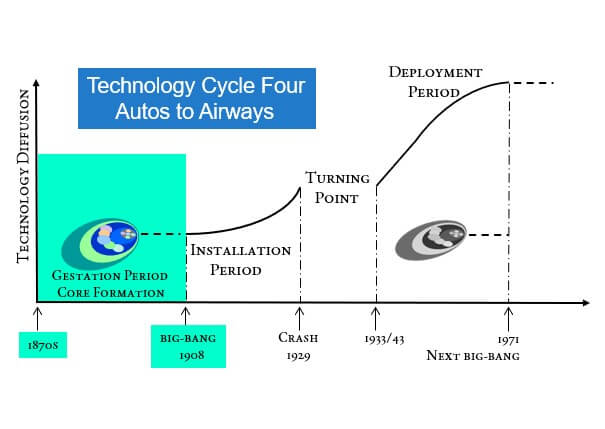
Gestation and Core Formation: The Hidden Foundation of Revolution
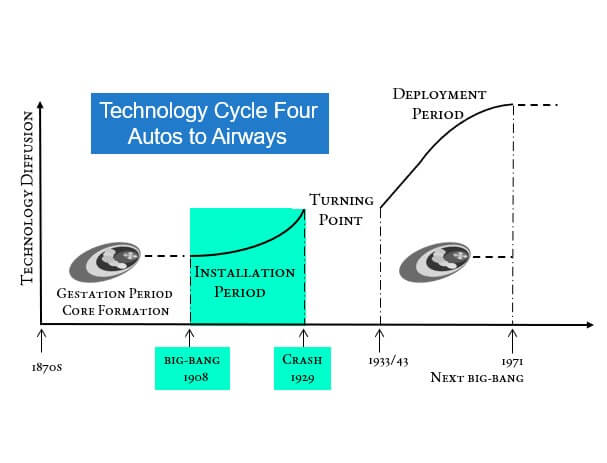
The Installation Period: Creative Destruction Unleashed (1900s – 1929)
Casino Phase
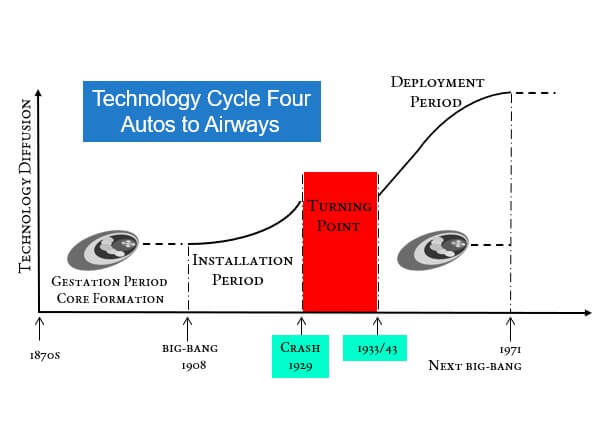
The Turning Point: Crises of recognition (1929 from 1933 Europe – 1943 USA)
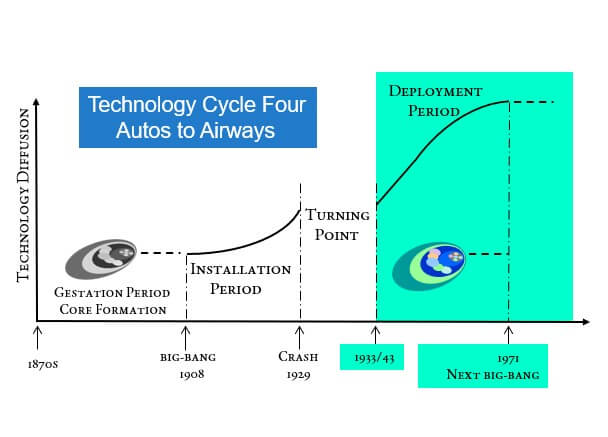
The Deployment Period: Creative Construction (1933/43-1970s)

The fourth technology cycle library entrance is below. It lists all the innovations and bibliographies from the fourth Perezian Period in which they occurred:
Cycle Four’s Singularity Stack Entrance
The main entrance to Technology Cycles Main Library – The Singularity Stacks Link
The picture of the Stacks is a hotlink as well
